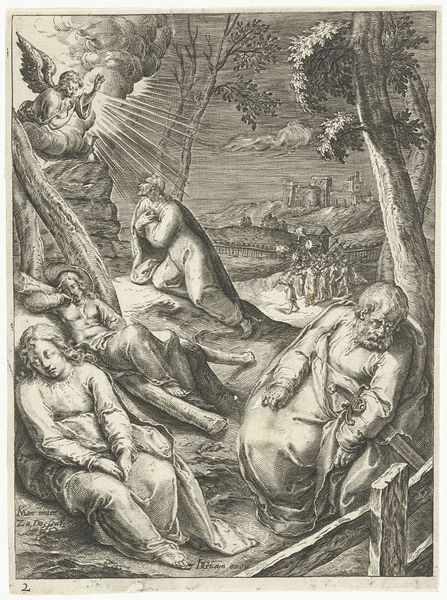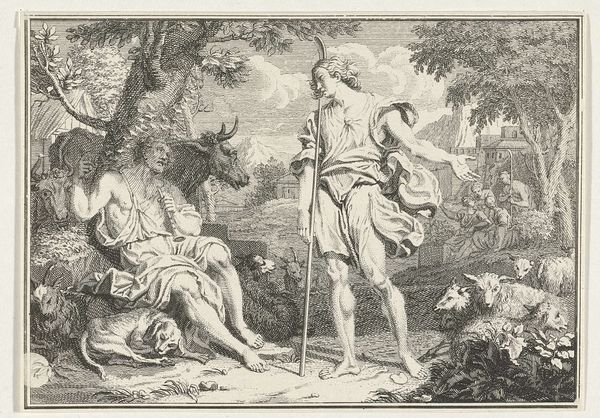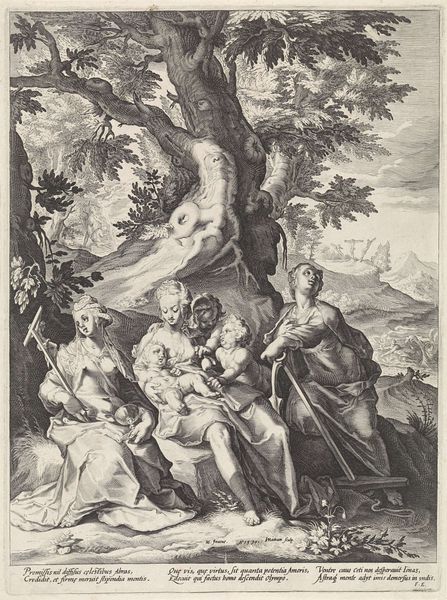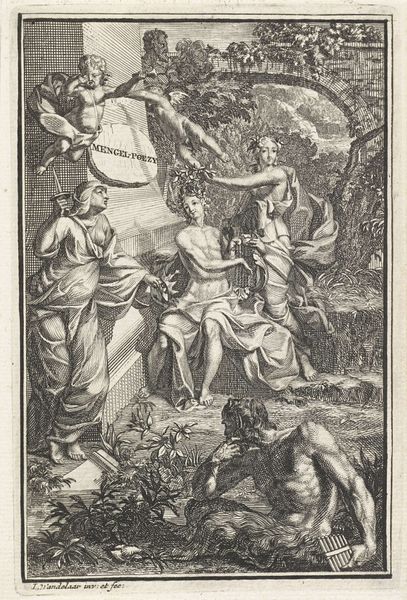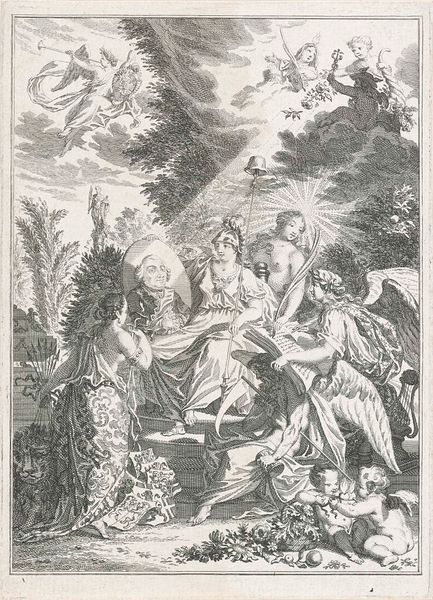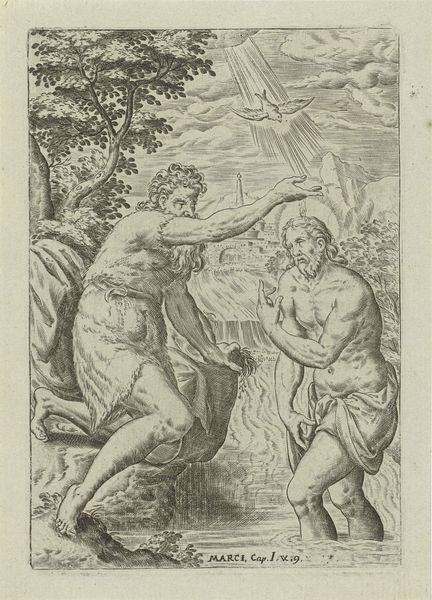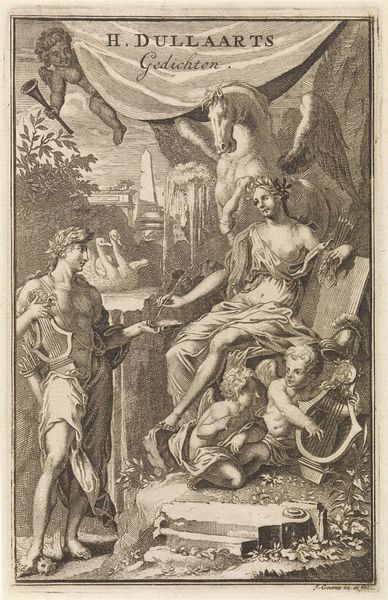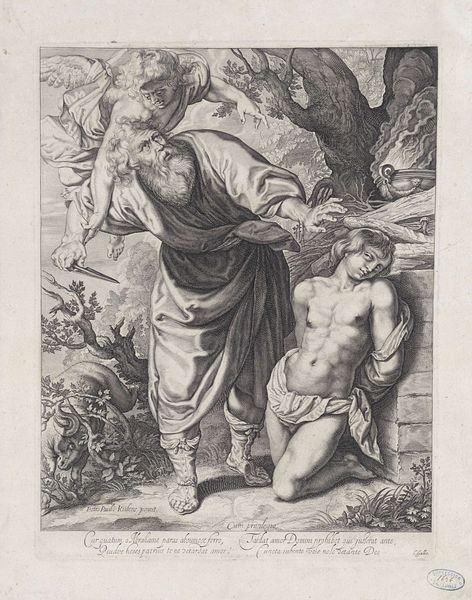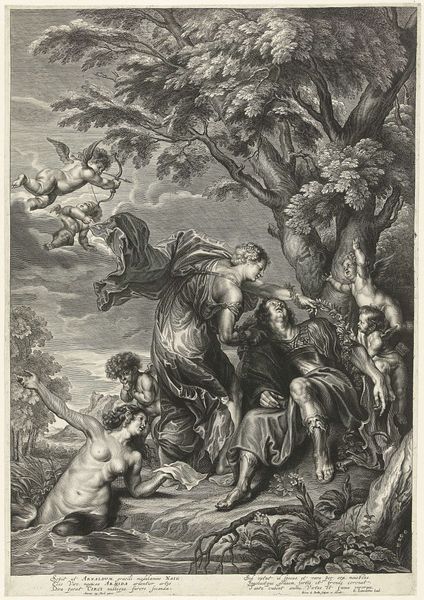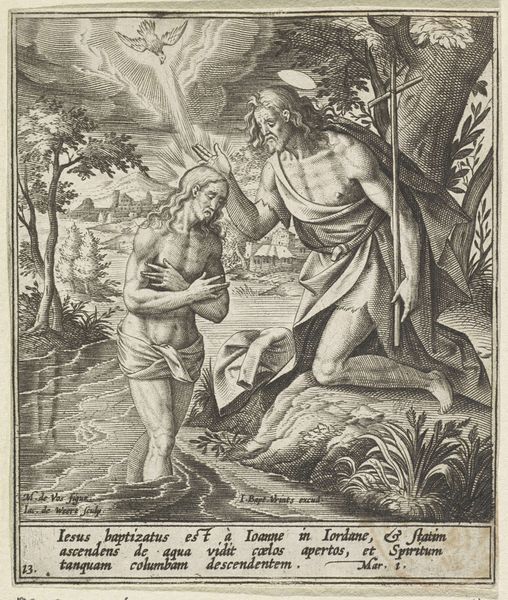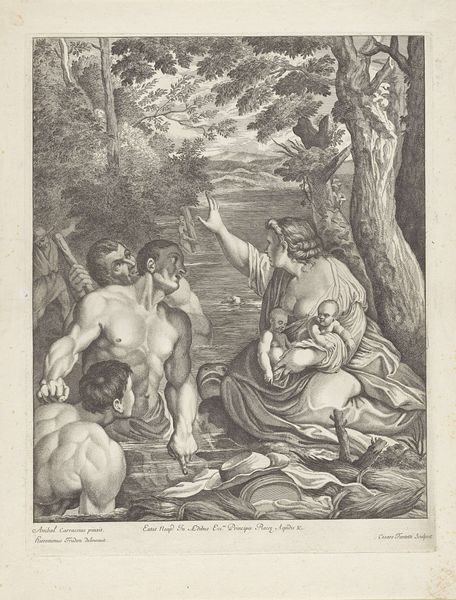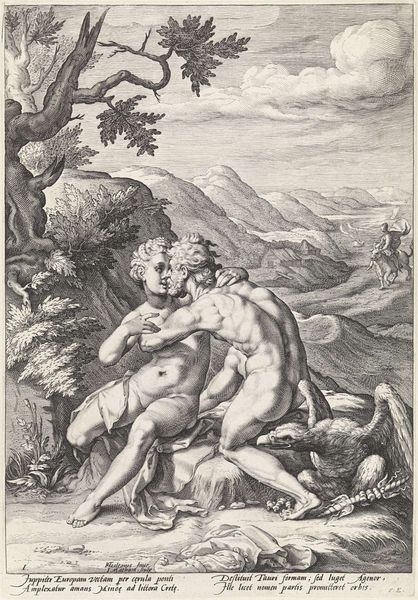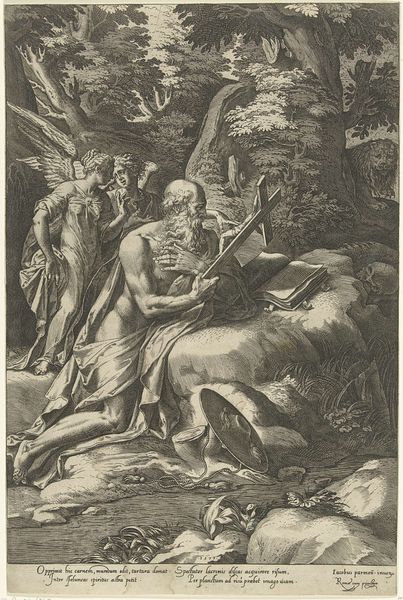
print, engraving
#
baroque
# print
#
figuration
#
line
#
history-painting
#
engraving
Dimensions: height 362 mm, width 263 mm
Copyright: Rijks Museum: Open Domain
Editor: This engraving by Cornelis Bloemaert, titled "Johannes de Doper wijst zijn discipelen Christus aan" or "John the Baptist pointing out Christ to his disciples," was created in 1693. I find the detail remarkable, especially the intricate linework. What strikes me is the contrast between the prominent figures in the foreground and the diminutive Christ in the distance. What can you tell me about its historical context? Curator: Given that this print was made in 1693, it's interesting to consider the role prints played in disseminating religious ideas at the time. Notice how Bloemaert depicts John the Baptist as physically commanding and uses his posture to directs the viewer's gaze? What socio-political meanings do you think the work might have when reproduced for a larger audience during a period when the Church wanted to establish control? Editor: I guess the Church used this kind of image as a propaganda tool. It feels very didactic, pointing out the 'right' way to believe. Curator: Exactly. It's a visual sermon, distributed widely. Now, consider where this piece would have been displayed and consumed, or by who? Was it affordable for people to own this in their private collections or distributed to local churches for promoting the religious principles of the Counter-Reformation. Editor: I see. It was a message, meticulously crafted and intentionally spread. So much more than just a pretty picture. I now understand how its original display informs its purpose. Thanks! Curator: And seeing its role in circulating religious ideologies perhaps illuminates the visual politics operating at that time. A print, after all, could travel far further than any single painting.
Comments
No comments
Be the first to comment and join the conversation on the ultimate creative platform.
